How to Make the Most of Your Practice Time and Become a Better Guitarist, Part 1
In the first part of this two-part lesson, pro guitarists share advice on how to make the most of your time in the woodshed with some essential exercises to improve your playing now.

“What should I practice?” It’s a question I can remember asking myself many times, always while sitting in silent frustration with a guitar in my lap. You likely have found yourself in the same predicament.
And these days, with so much information out there, making good, worthwhile choices can be even more daunting. If only I could have asked great guitarists what they practiced… Well, that’s exactly what I did for this lesson!
All the guitarists featured here are professional musicians who work in a variety of different roles and settings. Some you may have heard of, others you likely haven’t. But I approached them because they all know what it takes to be a successful working guitarist – most notably, the ability to be creative and musical.
So I asked them for something they worked on that they felt ultimately helped them to accomplish this – something that made them say, “I’m glad I worked on that!”
Let’s dive right in!
There’s a lot to present here, and so we split this lesson into two parts, with part 2 coming soon.
Note that each musical example has accompanying audio or video. With the exception of Examples 1, 2, and 3a, all feature the artist themselves.
The notes and rhythms are like the lines in an actor’s script, but the phrasing and intention/spirit are what bring them to life
Pete Thorn
In addition to touring with the likes of Chris Cornell and Melissa Etheridge, Pete Thorn has created an immensely popular YouTube channel, where he creates insightful demos for the gear aficionado in us all.
Pete sent along this nugget of wisdom: “I’m glad that I practiced learning the songs, licks and approaches of several of my heroes, and I tried not only to get the notes and rhythms just right, but also worked hard to get the phrasing and spirit right.
“The notes and rhythms are like the lines in an actor’s script, but the phrasing and intention/spirit are what bring them to life: the drama of Brian May’s leads, the delicate intention of David Gilmour’s solo phrases, or the high-octane, joy-filled exuberance of Eddie Van Halen’s inspired, off-the-cuff improvisations.”
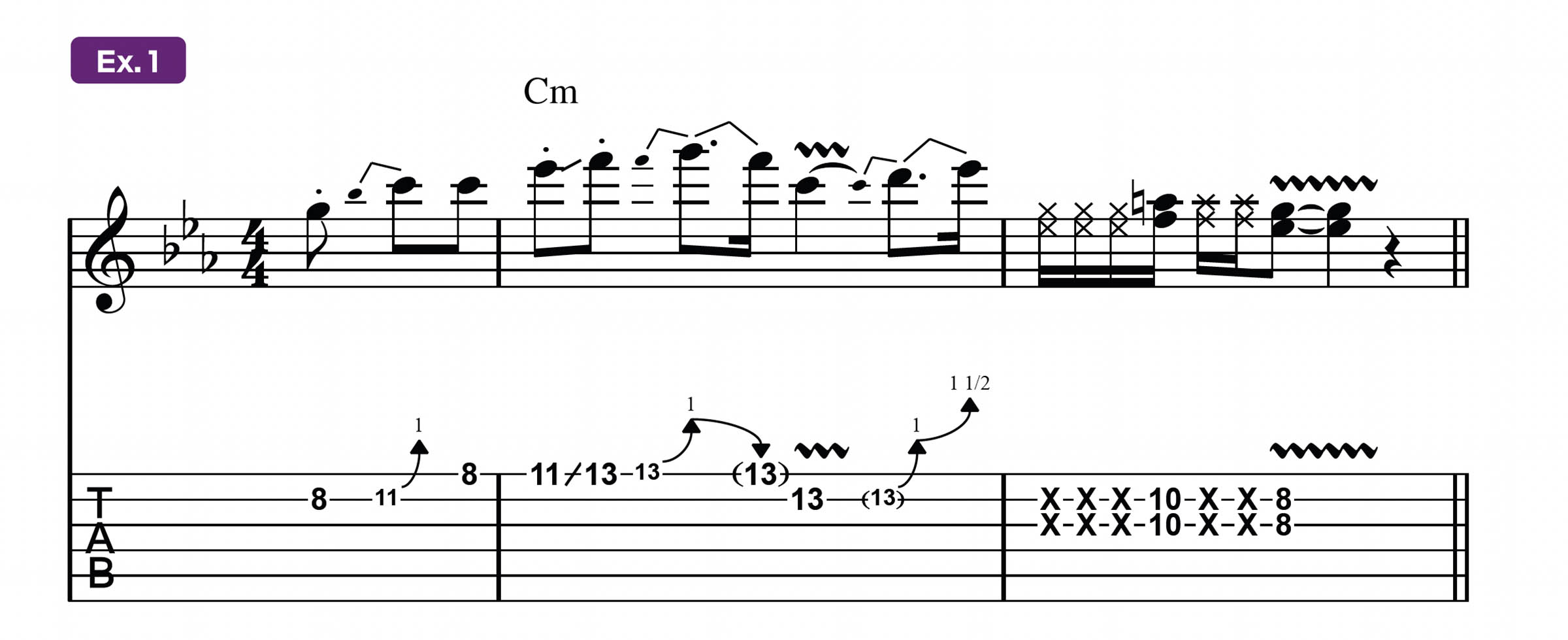
Let’s put this into action by taking a look at Example 1, a phrase in the style of David Gilmour. More than simply learning the notes, try to capture the way Gilmour would play them.
Do this by paying close attention to the musical details. For example, the staccato dots, indicating to cut certain notes short, as well as the relaxed nature of the release and subsequent bend in bar 1.
Dale Turner is a rock singer/songwriter, multi-instrumentalist and film composer, and was Guitar World’s prestigious “Hole Notes” and “Acoustic Nation” columnist. If that isn’t enough, he has been an instructor at Hollywood’s Musicians Institute for the past 21 years.
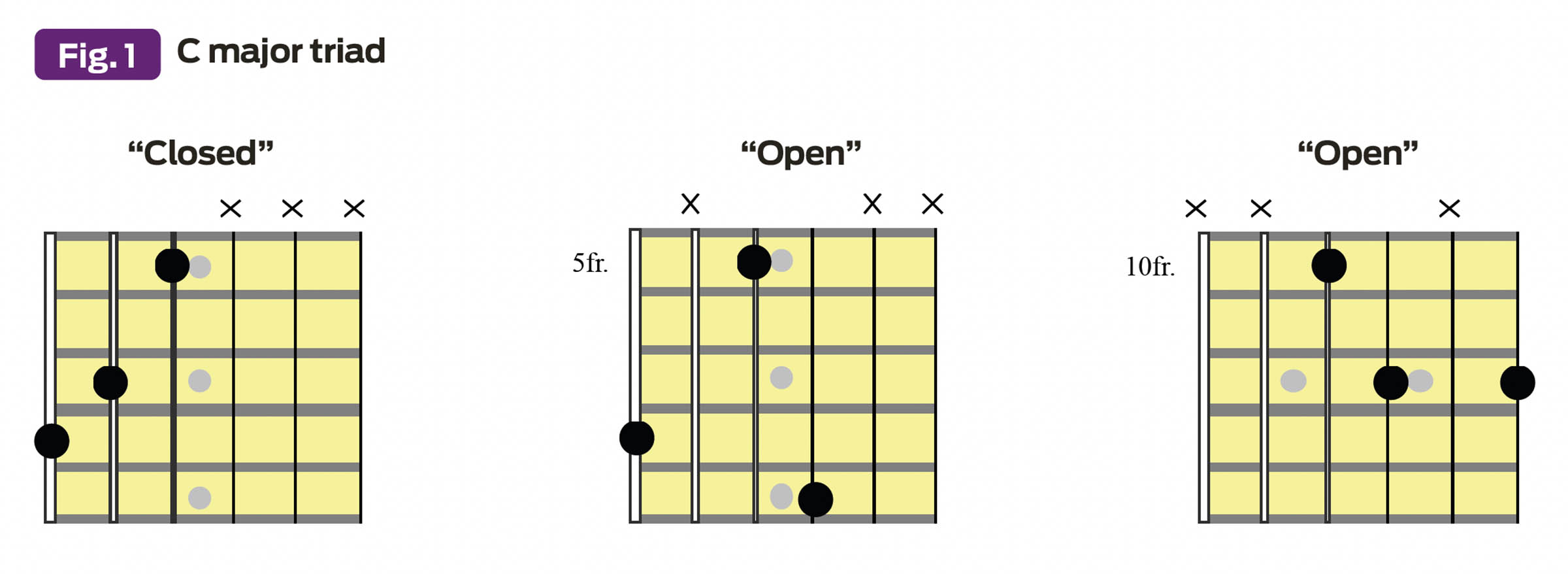
Dale offered the nifty suggestion to learn open-voiced, or “spread,” triads. Figure 1 illustrates how a “closed” triad voicing – with all three notes on adjacent strings – can be magically transformed into an “open” one, by simply taking the middle note and moving it up an octave.
See how the middle note of a root-position C major triad (C, E, G), the 3rd (E), initially fingered on the A string’s 7th fret in the first diagram, is moved up an octave to the G string’s 9th fret in the middle diagram.
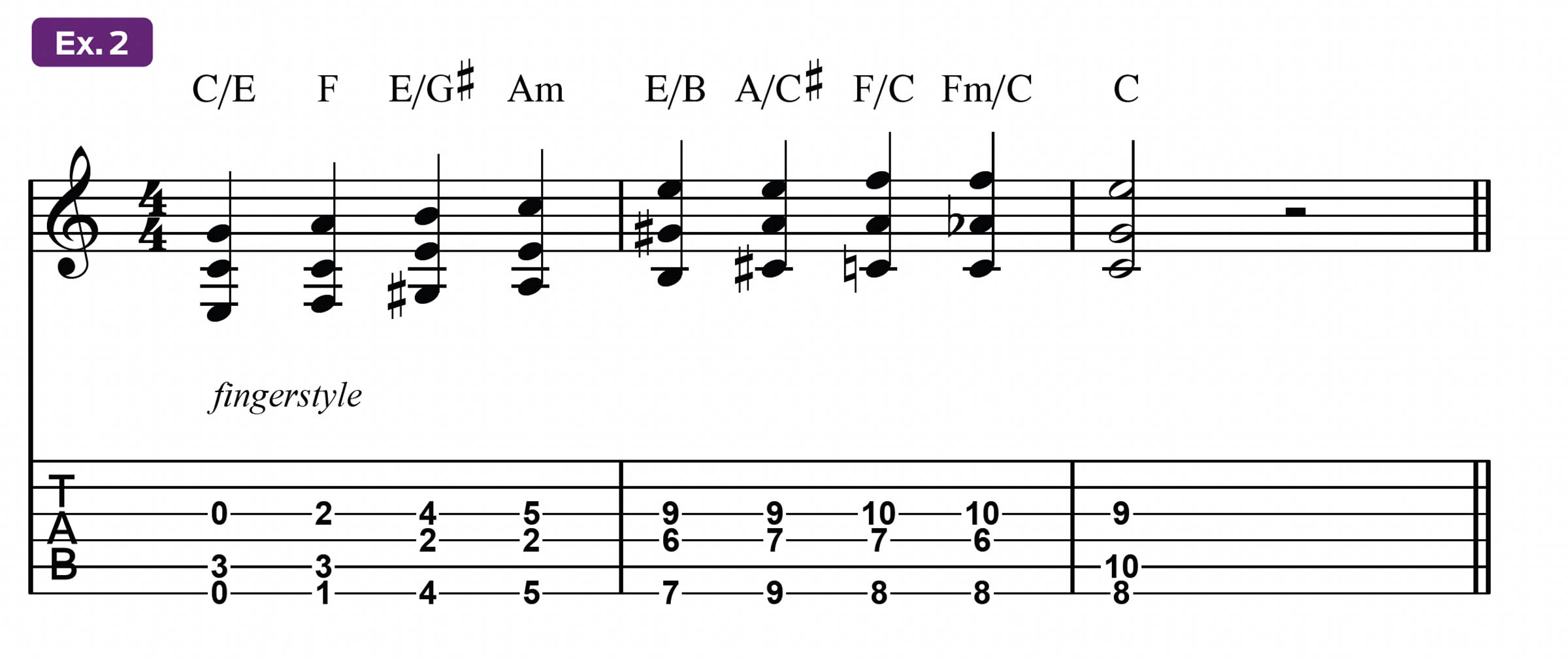
In the third diagram, Dale shows us the same voicing moved up an octave, at no extra charge. He highlighted that spread triads come in quite handy for his work as a film composer, and Example 2 demonstrates the sense of drama they can create.
Bess Rogers is a Nashville-based singer/songwriter, who has released multiple albums (Out of the Ocean, Can’t Remember Where), licensed her music for ad campaigns (Cheerios, Google) and, in 2019, was a member of the pit band for the Go-Go’s Broadway musical, Head Over Heels. Somehow,
Bess still finds the time to run an online songwriting school and community with friend and writing partner Allie Moss called Thinking Outside the Blocks.
Bess recommends exploring new styles of music, and she recently challenged herself to play songs by blues and gospel singer/guitarist Blind Gary Davis. Bess explains, “At the time, I just learned them for fun, but in the end, it really opened up the possibilities for me in my playing. I’ve written several songs inspired by those songs I learned.”

Example 3a is based on Davis’s style, but check out Example 3b to see how Bess made it her own, in her as-yet-unreleased song, Little Scientist.
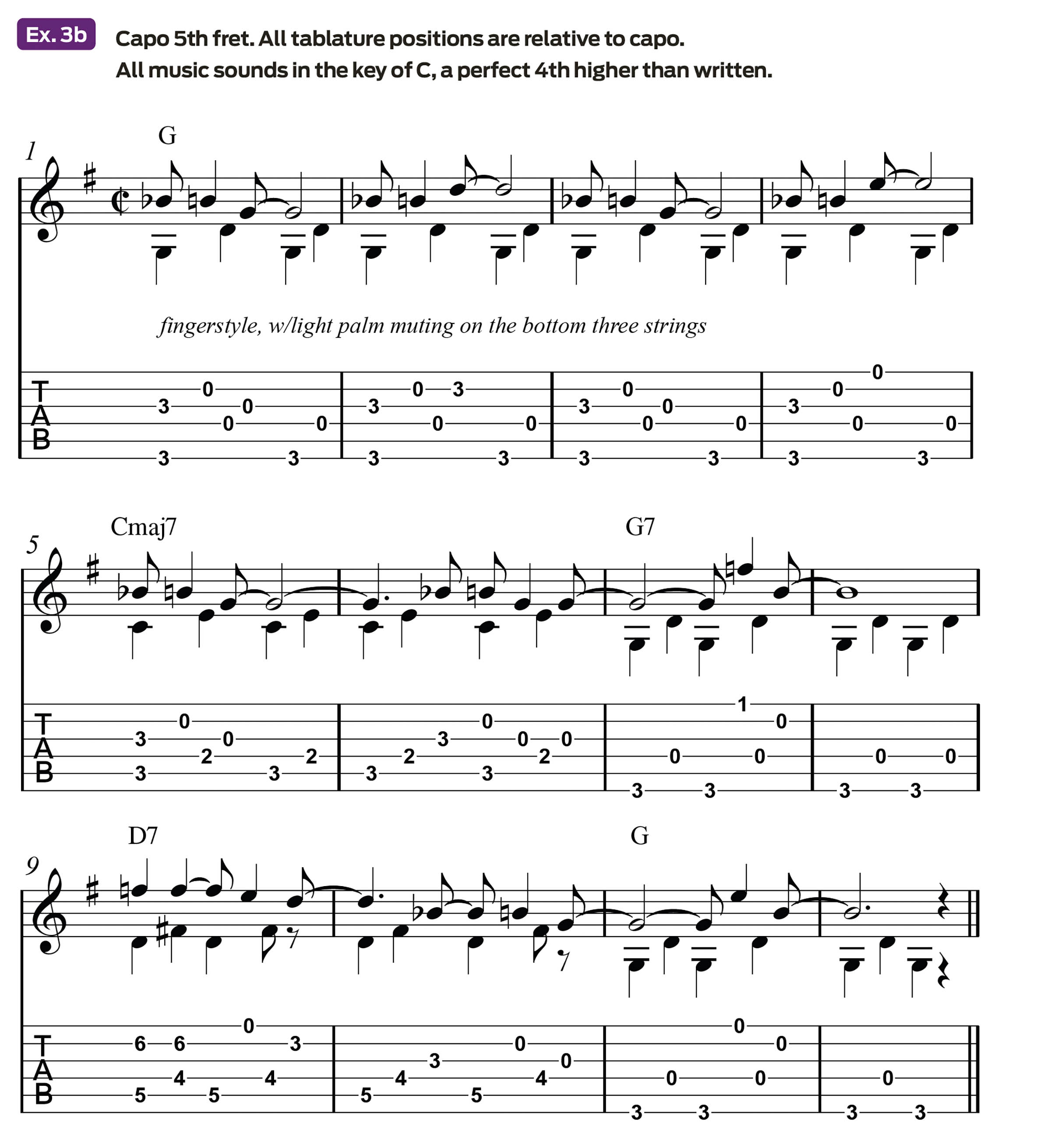
Gilber Gilmore is a major women’s fashion designer. He also just happens to be a veteran of New York City’s live music scene. A rock player for most of his life, Gilber challenged himself to learn a new style of music in much the same way Bess Rogers did, but he has done so with results that are completely different from hers.

When he discovered he loved the sound of country guitar “chicken pickin’,” he spent two years perfecting a three-minute tour de force by guitarist/teacher Doug Seven. See Example 4a for one of Gilber’s smoking-hot licks in this style.
In addition to discovering myriad new ways to use string bends, playing country guitar also introduced Gilber to a new technique: hybrid picking, or playing with a pick and fingers simultaneously or in an alternating manner.
But wait, there’s more! Since he now had greater facility with his picking hand, Gilber found himself delving into the world of acoustic fingerstyle guitar, especially after seeing virtuoso Tommy Emmanuel perform.
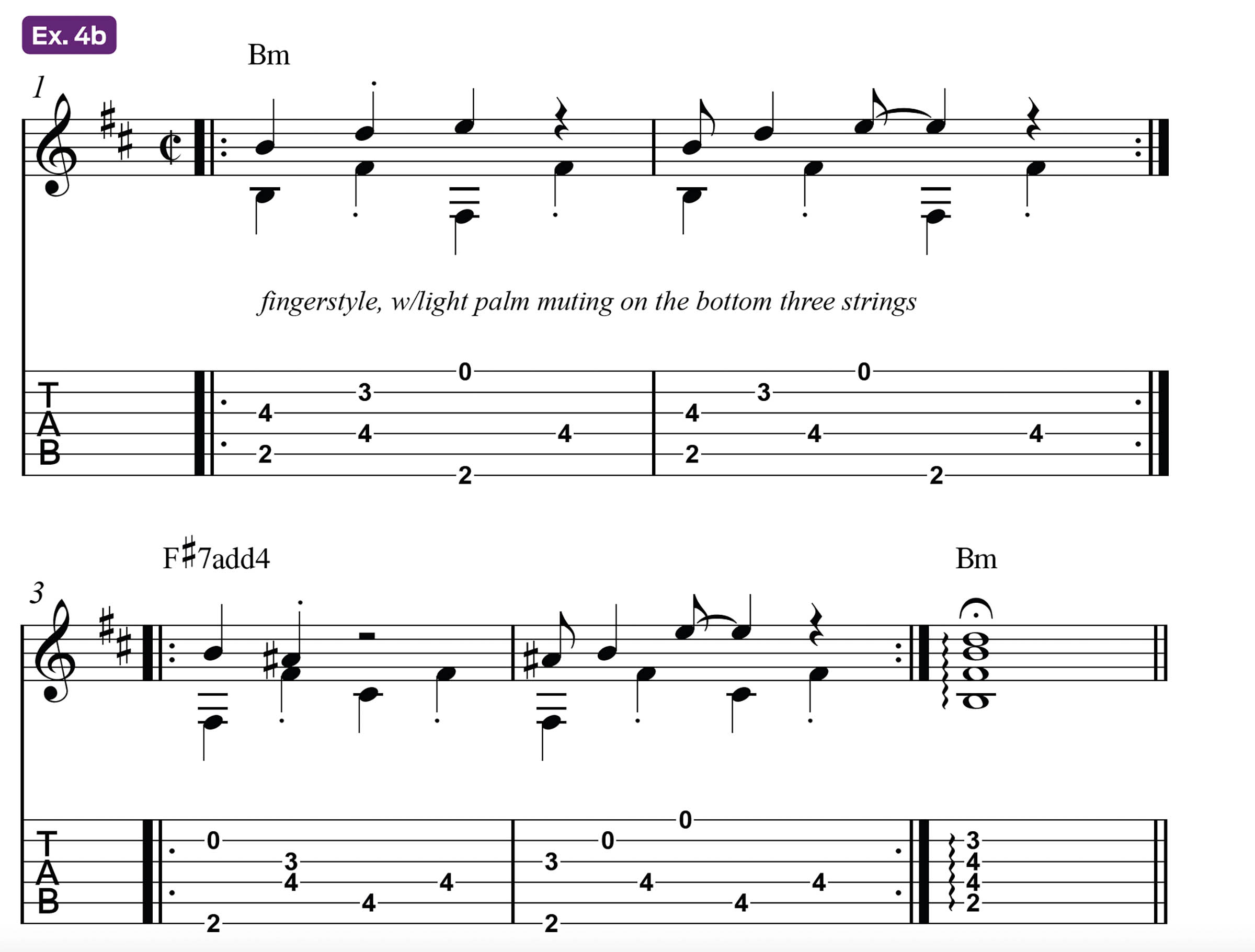
Check out Example 4b for a taste of Gilber’s acoustic playing. As you can see in the previous example’s video, Gilber now even plays country without a pick. He shows us how learning something new can lead you to unexpected places.
If you check out singer/songwriter Abby Ahmad’s Instagram ) or TikTok, you’ll find that she is hilarious. But Abby takes her songwriting and guitar playing very seriously. She routinely spends part of her practice time experimenting with open and alternate tunings in her quest for new sounds, often starting with common guitar fingerings borrowed from standard tuning.
In her video, she shows us step-by-step how, by exploring different tunings and using a capo, she was able to transform a musty old guitar cliché into something shiny and new.
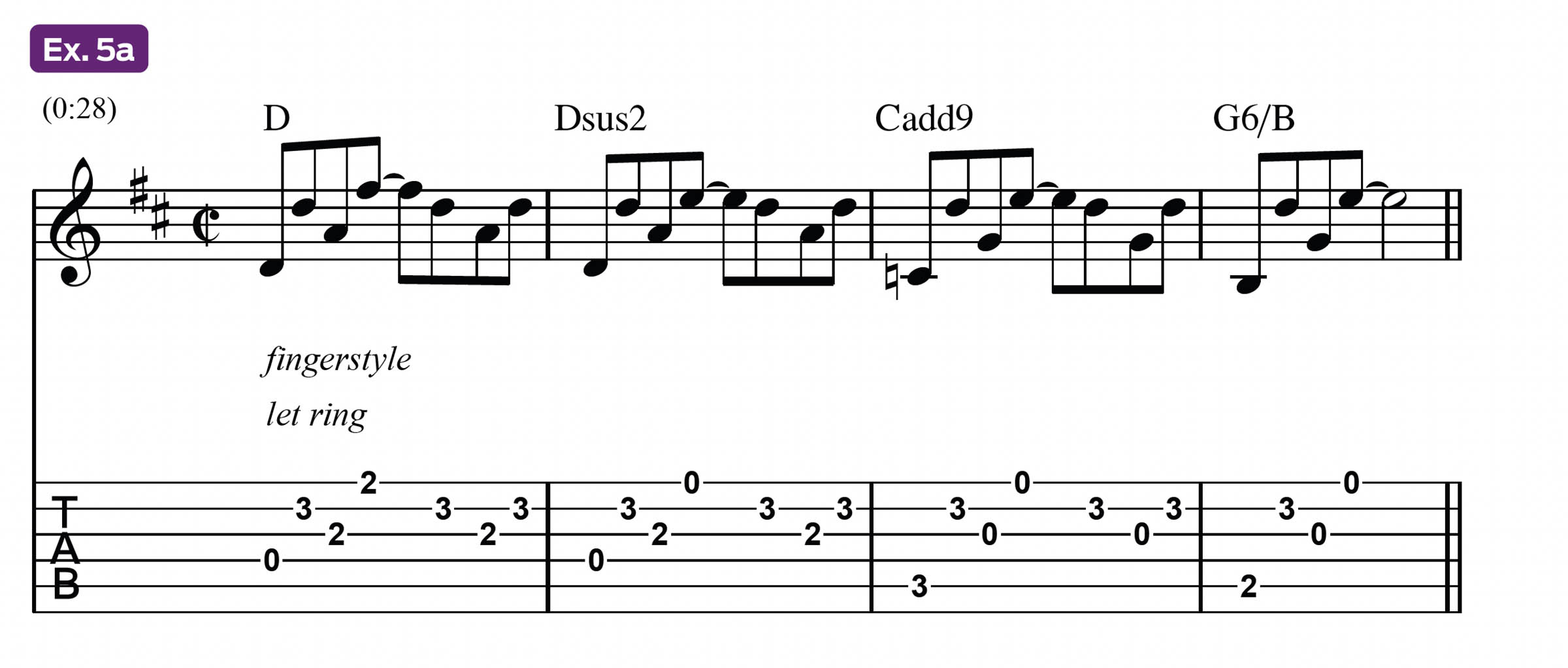
The resulting song, Somewhere in Between, can be found on her excellent 2021 album, Tea with Shadows. In her own unique way, Abby describes this process as “taking something vanilla and infusing a caramel swirl!”
See Examples 5a and 5b to witness the transformation from tiresome to awesome.
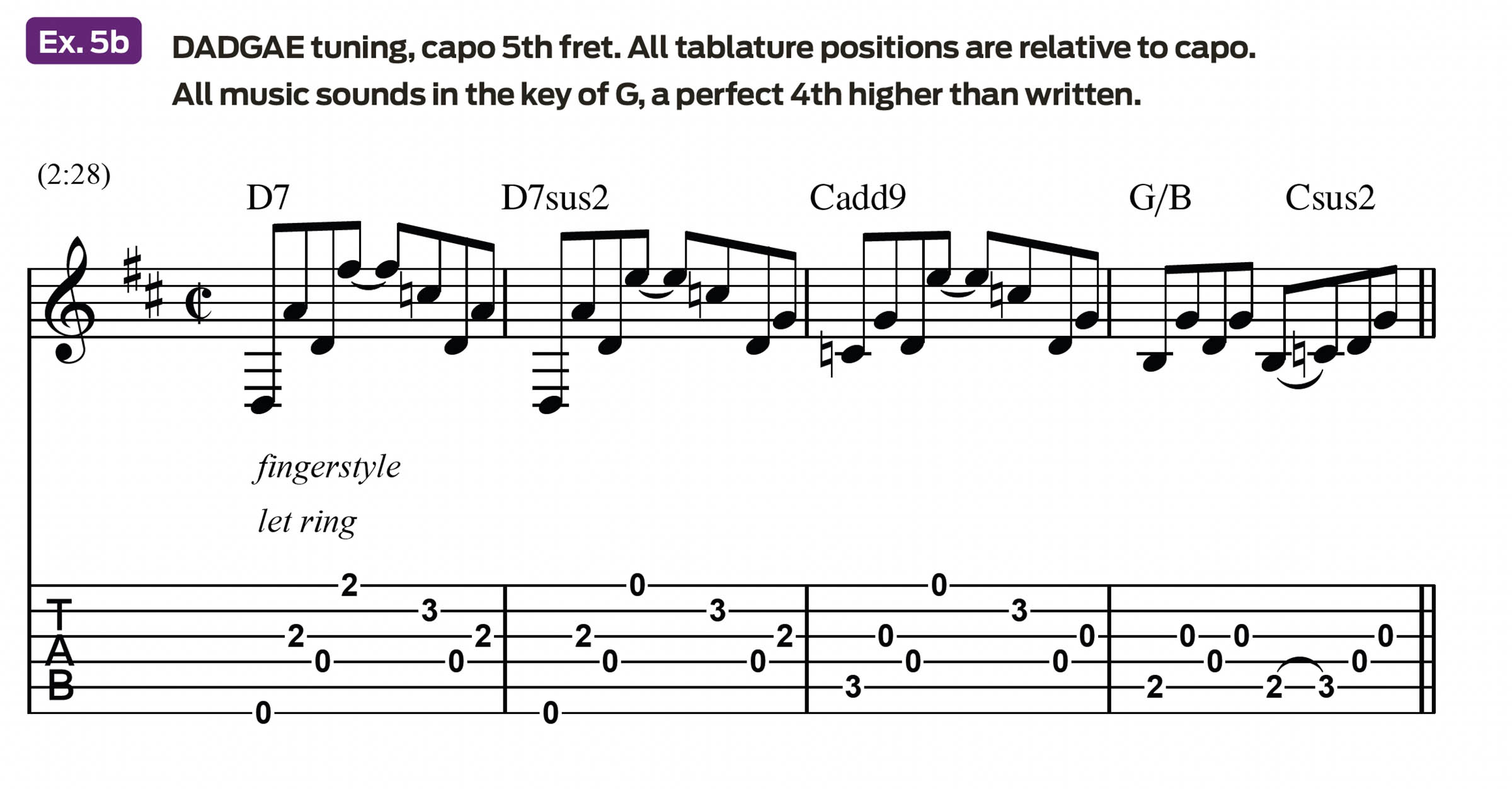
This has been so much fun that we’re going to continue next month with more great guitarists’ practice advice, including Joel Hoekstra of Whitesnake and Trans-Siberian Orchestra. See you then!
Have a question or comment about this month’s lesson? Feel free to reach out to Jeff Jacobson on Twitter @jjmusicmentor or at jeffjacobson.net.
Get The Pick Newsletter
All the latest guitar news, interviews, lessons, reviews, deals and more, direct to your inbox!
Jeff Jacobson is a guitarist, songwriter and veteran music transcriber, with hundreds of published credits. For information on virtual guitar and songwriting lessons or custom transcriptions, reach out to Jeff on Twitter @jeffjacobsonmusic or visit jeffjacobson.net.
“Write for five minutes a day. I mean, who can’t manage that?” Mike Stern's top five guitar tips include one simple fix to help you develop your personal guitar style
"It’s like you’re making a statement. And you never know where it’ll lead." Pete Thorn shares the tip that convinced Joe Satriani he was the right guitarist for the SatchVai Band











